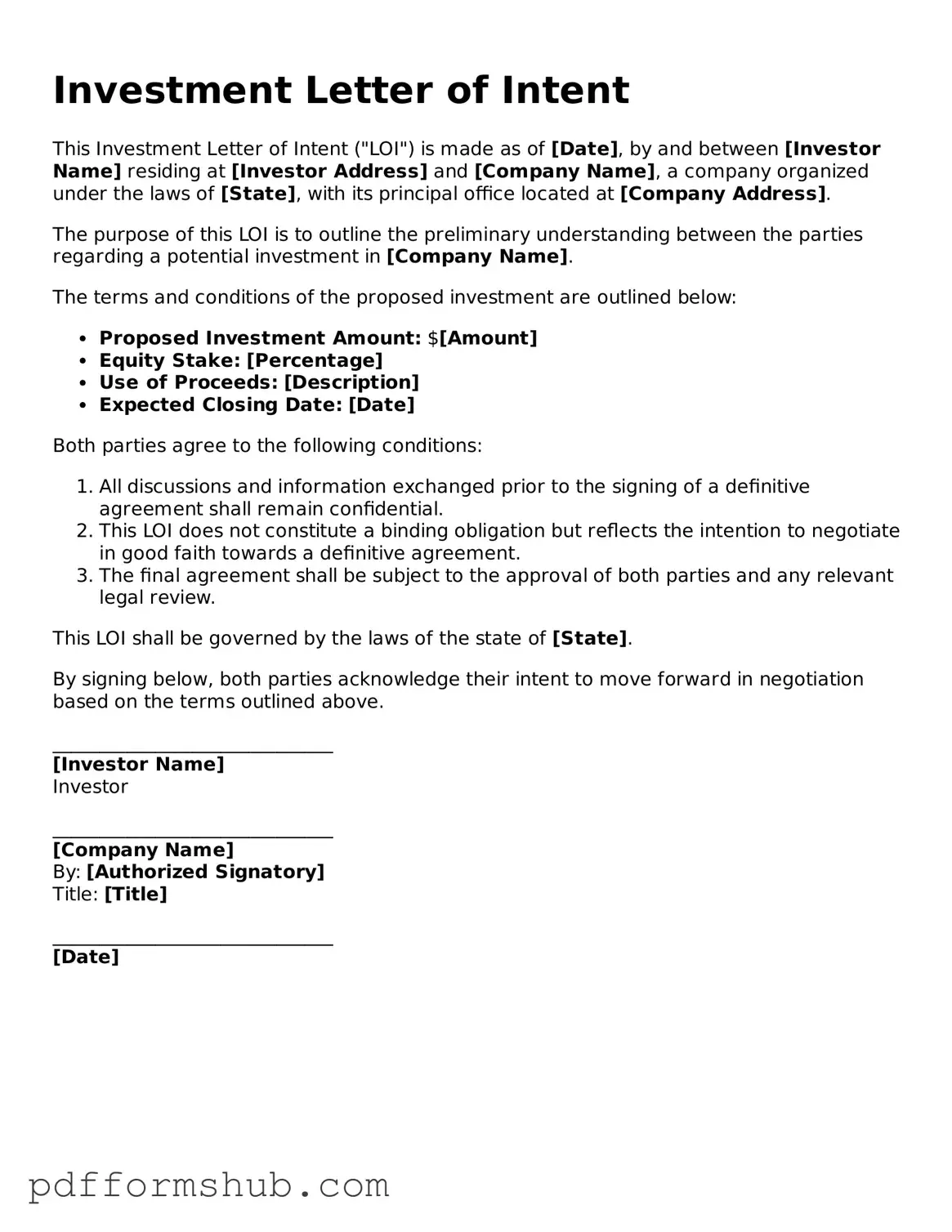Valid Investment Letter of Intent Form
An Investment Letter of Intent (LOI) is a preliminary agreement that outlines the basic terms and conditions under which parties intend to engage in a future investment. This document serves as a foundation for negotiations, providing clarity and direction for both investors and companies. Understanding its significance can streamline the investment process and foster successful partnerships.
Ready to take the next step? Fill out the Investment Letter of Intent form by clicking the button below.
Customize Form
